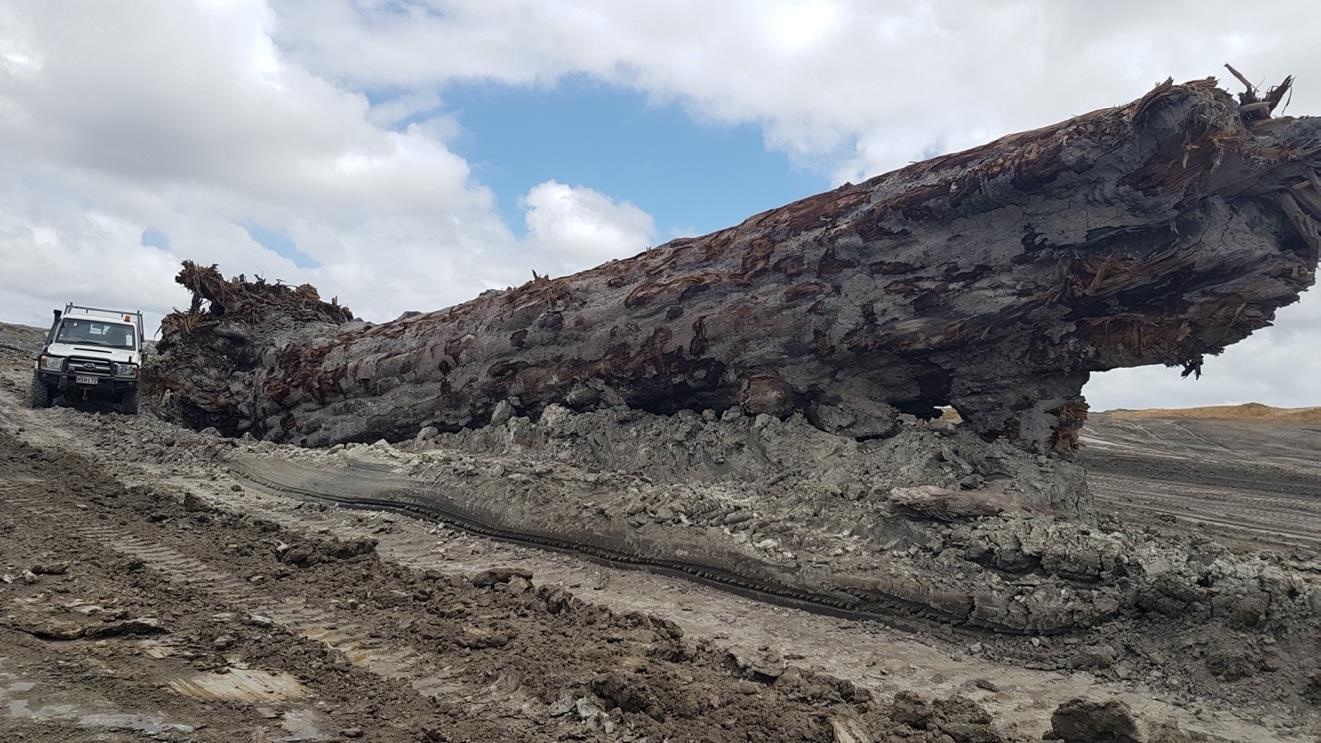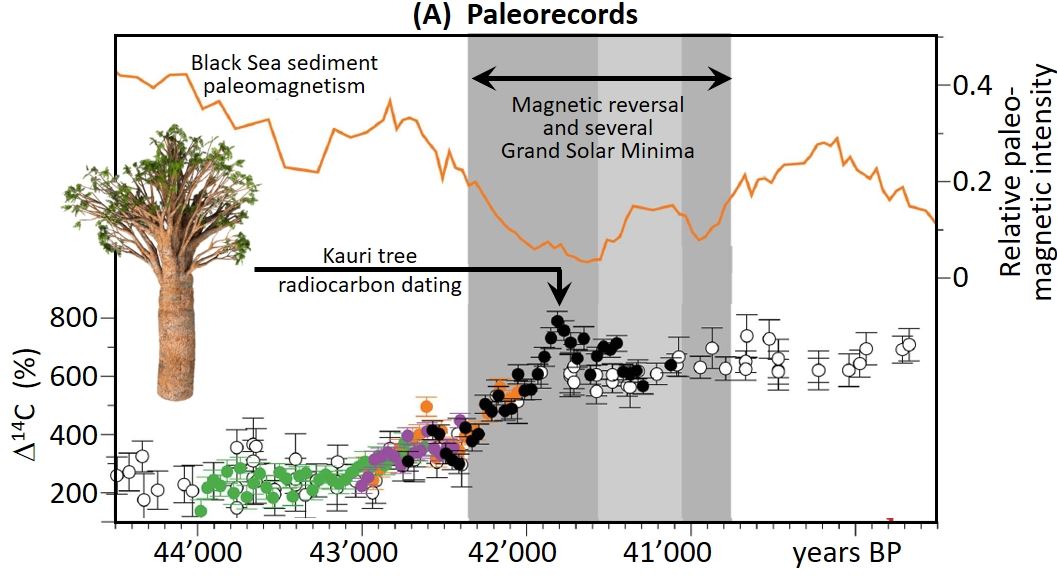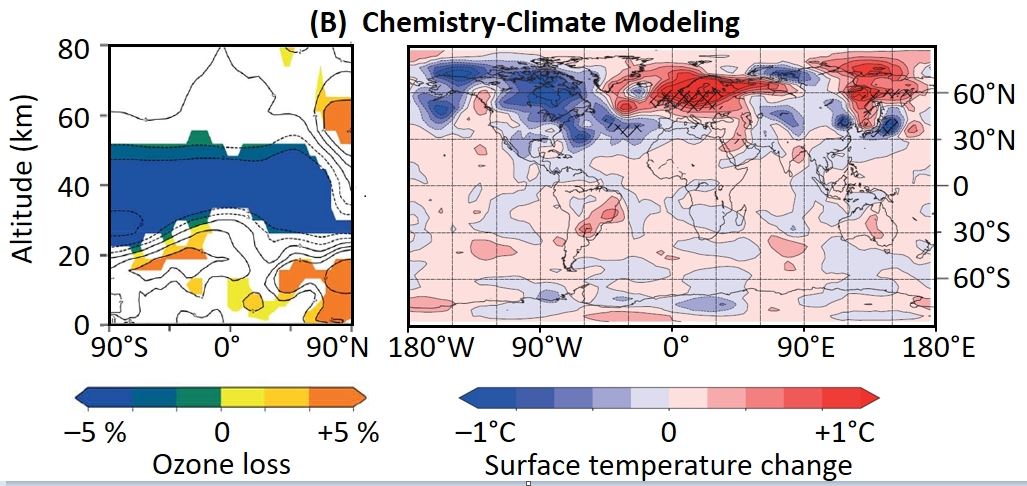Ancient trees hint at Earth's global environmental crisis 42,000 years ago
- D-USYS
- Institute for Atmospheric and Climate Science
The temporary breakdown of Earth’s magnetic field 42,000 years ago, in combination with a low point of solar activity (Grand Solar Minimum), sparked major climate shifts that led to global environmental change and mass extinctions, a new international study with participation of ETH scientists suggests. The findings have been published in "Science" on 18 February 2021.
The findings were made possible with ancient New Zealand kauri trees, which have been preserved in sediments for over 40,000 years. The archaeological work and project lead have been performed by researchers at the South Australian Museum and the University of New South Wales. Scientists of the ETH atmospheric chemistry group, at the Zürich University of Applied Sciences and at the Physical Meteorological Observatory Davos analysed the atmospheric and climate impacts with global chemistry-climate modelling(1,2).
Environmental crisis 42.000 years ago
Using the ancient trees, the researchers could measure, and date, the spike in atmospheric radiocarbon levels caused by the collapse of Earth’s magnetic field. While scientists already knew the magnetic poles temporarily flipped around 41-42’000 years ago—the so-called ‘Laschamps Excursion’—it was unclear exactly how this affected life on Earth. Now, the researchers compared the novel, more accurate timescale with records from sites around the world and used it in global modelling, finding that the growth of ice sheets and glaciers over North America as well as large shifts in major wind belts could be traced back to the Laschamps Excursion. Across mainland Australia and Tasmania, the megafauna went through simultaneous extinctions.
Exposed to cosmic radiation
42’000 years ago, during the run-up to the last glacial maximum, a complete loss of the Earth’s magnetic protection shield against highly energetic particles from remote super novae—called galactic cosmic rays or GCRs—coincided with periods of a weak sun, similar to the Maunder Minimum in the late 17th century. As the solar wind, which also shields the Earth against GCRs, stalls during these Grand Solar Minima, this led to an additional loss of the Earth’s protection against GCRs, besides the frosty reduction of insolation.
Geomagnetism underestimated so far
With weakened magnetic field and solar wind, GCRs may penetrate the Earth’s atmosphere all the way to the surface. Besides the direct impact on the biota, GCRs smash the air molecules, leading to enhanced atmospheric NOx production, which impacts the ozone layer. The reduced ozone layer, in turn, change stratospheric and tropospheric circulation, giving rise to local droughts and glacial maxima in Australasia and the Andes, and the rapid, pronounced expansion of the Canadian ice sheet in North America, accompanied by massive changes in our planet’s habitability. It appears likely that geomagnetism is a major new evolutionary factor that has not been recognised until now.
References
(1) A global environmental crisis 42,000 years ago, Cooper, A., C. S. M. Turney, J. Palmer, A. Hogg, M. McGlone, J. Wilmshurst, A. M. Lorrey, T. J. Heaton, J. M. Russell, K. McCracken, J. G. Anet, E. Rozanov, M. Friedel, I. Suter, T. Peter, R. Muscheler, F. Adolphi, A. Dosseto, J. T. Faith, P. Fenwick, C. J. Fogwill, K. Hughen, M. Lipson, J. Liu, N. Nowaczyk, E. Rainsley, C. B. Ramsey, P. Sebastianelli, Y. Souilmi, J. Stevenson, Z. Thomas, R. Tobler, R. Zech, Science, 371, Iss. 6531, https://science.sciencemag.org/cgi/doi/10.1126/science.abb8677 (2021).
(2) Suter, I., R. Zech, J. Anet, T. Peter, Impact of geomagnetic excursions on atmospheric chemistry and dynamics, Clim. Past, 10, 1183–1194 (2014).


